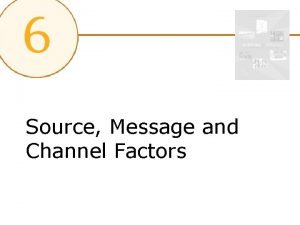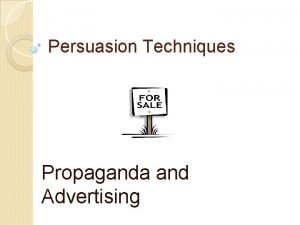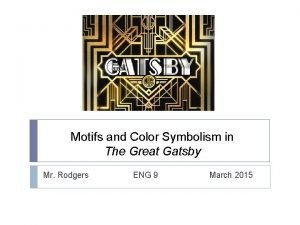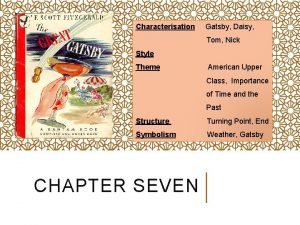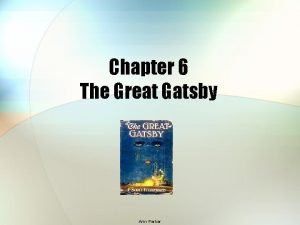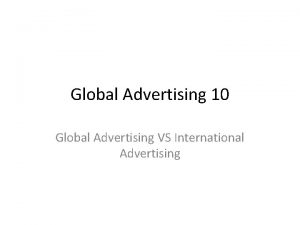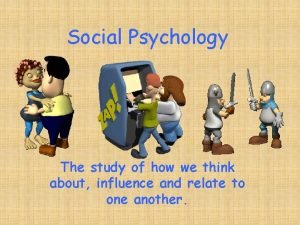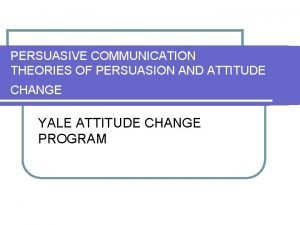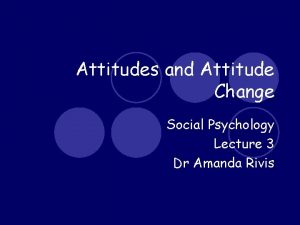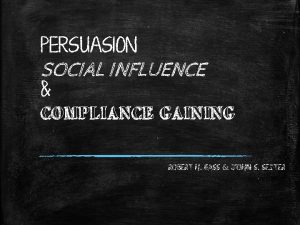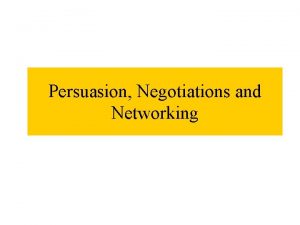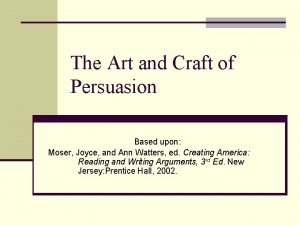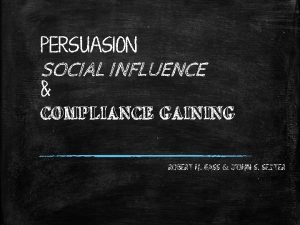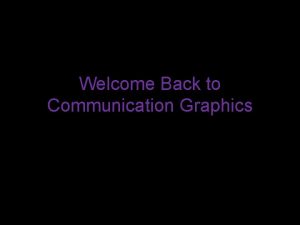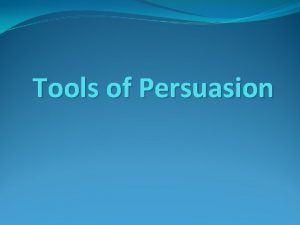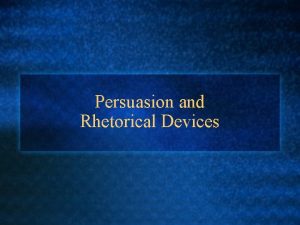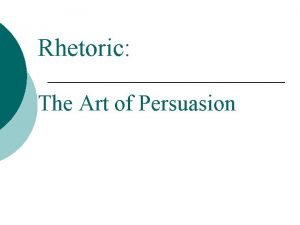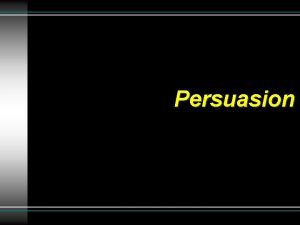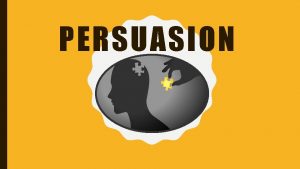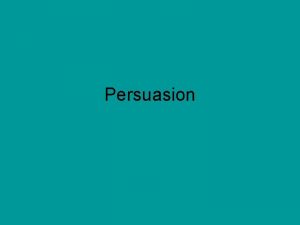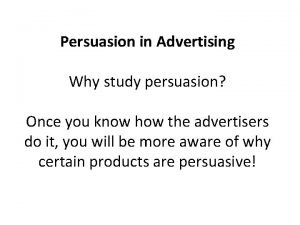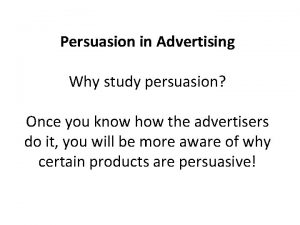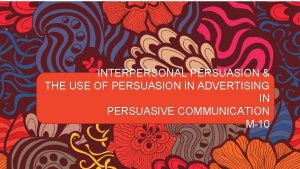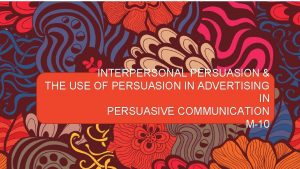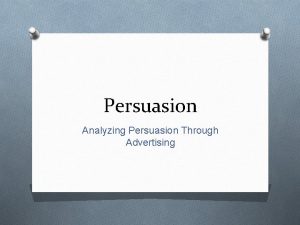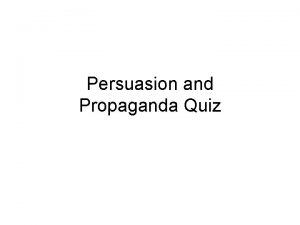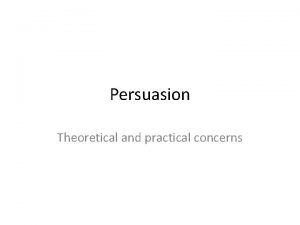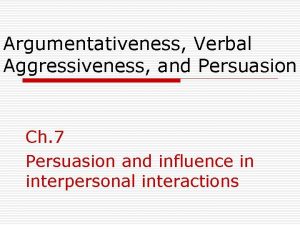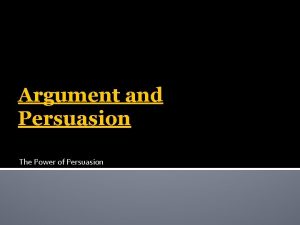Advertising and Persuasion in Advertising Mrs Gatz English































- Slides: 31

Advertising and Persuasion in Advertising Mrs. Gatz English 9

“The Pen Is Mightier Than the Sword. ” -English author Edward Bulwer. Lytton, 1839 • What does Bulwer-Lytton mean?

What is Persuasion? • Persuasion is the use of specific techniques to lead a reader/listener/viewer to think or act in a certain way.

Why Learn This? • Learning persuasive techniques will make your writing and speaking more forceful and convincing, thereby giving you more power. • But of course that means others can use those techniques AGAINST YOU! • This means you need to learn these techniques not only so you can use them, but also so you can guard yourself against them.

How Do You Persuade? • Logical persuasive arguments are built on reasons supported by evidence. • Facts and statistics • “A recent study shows that 61% of high school students have at one time or another cheated on a test. ” • Expert testimony • “Since we instituted the ‘No Cell Phone’ policy, ” says Mrs. Shaw, principal of Adams High, “we have had fewer instances of theft among students. ” • Anecdote (from credible source) • A chemistry teacher tells a short story about an injury that occurred when a lab assistant failed to follow instructions. • Logical reasoning • “For the past 40 years, January has brought southern California the most rain, so we can expect that to be the case next year, too. ” • Analogy (ONLY if logical) • “Just as a sword is the weapon of a warrior, a pen is the weapon of a writer. ”

Appeal to Logic (Logos) • Logic is the science of correct reasoning that’s been slowly built into your brain by your experiences in the world.

Beware of Faulty Reasoning: Fallacies • What are fallacies? • Statements which sound logical and factual, but are not. • Fallacies make your argument less valid. • Many advertisements rely on your inability to recognize fallacies. So learn them, or your brain will be at risk!

What is Rhetoric? Rhetoric is the art of persuasion. It encompasses the following: • Ethos- the trustworthiness of the speaker/writer/source. • Pathos- an appeal to feelings/emotions • Logos- any attempt to appeal to the intellect

Persuasive Techniques in Advertising executives get paid DUMB money for controlling your brain. They do that by using techniques above, and those that follow. The following techniques can be found in print and film ads alike.

Bandwagon Appeal • The “Everyone else is doing it” appeal. NOTE: Bandwagon Can be used to reinforce logical appeals, but use it wisely.

Bait and Switch • A dishonest tactic in which a salesperson lures customers into a store with the promise of a bargain.

Celebrity Spokesperson • Uses a celebrity or famous person to endorse a product.

Emotional Appeal (Pathos) • Make viewers feel certain emotions, such as excitement, sadness, or fear.

Glittering Generalities • Emphasizes highly valued beliefs, such as patriotism, peace, or freedom.

Humor • Used to make audiences laugh, but provides little information about the product or service

Individuality • Appeals to consumers’ desire to be different from everyone else; the opposite of bandwagon appeal.

Loaded Language • Uses words with positive or negative connotations to describe a product or that of the competitor.

Name-Calling • Attacks people or groups to discredit their ideas.

Plain Folk • Shows ordinary people using or supporting a product or candidate.

Product Comparison • Compares a product with the “inferior” competition.

Transfer • Positive words, images, and ideas used to suggest that using the product will make your life like that in the commercial/ad.

Alliteration The repetition of consonant sounds at the beginning of words. Ex.

Repetition of an image or sound can help company or its slogan work its way into your mind.

Color in Advertising • Certain colors draw the eye better than others. • Colors also have emotional connotations which help advertisers create a persona for the product they’re advertising.

Color in Advertising

When You See an Ad… Ask the following (PMATE): • What is the PRODUCT? • What is the MESSAGE? • Who is the AUDIENCE? • What TECHNIQUES are used? • What is the intended EFFECT? Let ‘s practice.

Ad # 1

Ad # 2

Ad # 3

Stayed tuned for FALLACIES!

Remember This… • Effective persuasion is always built on logical appeals and evidence. • Advertisers want your brain! • Okay, maybe not literally—yet. But they do want your money, and they will do everything they can to get it! • Use your critical thinking skills to evaluate an ad’s message before buying into it.
 They are mrs garcia and mrs castro
They are mrs garcia and mrs castro They are mrs garcia and mrs castro
They are mrs garcia and mrs castro Persuasive matrix
Persuasive matrix Snob appeal in advertising
Snob appeal in advertising Mrs. darling was ___________ of mrs. s.
Mrs. darling was ___________ of mrs. s. James gatz
James gatz Henry gatz
Henry gatz What is the significance of mr. gatz’s arrival
What is the significance of mr. gatz’s arrival James gatz symbols
James gatz symbols Henry gatz
Henry gatz Huge incoherent failure of a house
Huge incoherent failure of a house Henry c. gatz
Henry c. gatz Henry c. gatz
Henry c. gatz Chapter 6 summary great gatsby
Chapter 6 summary great gatsby What does gatsby tell nick about himself
What does gatsby tell nick about himself Global advertising and international advertising
Global advertising and international advertising Higher english mrs midas past paper
Higher english mrs midas past paper In mrs tilscher's class analysis higher english
In mrs tilscher's class analysis higher english Central route of persuasion
Central route of persuasion Yale approach to communication and persuasion
Yale approach to communication and persuasion Cognitively based attitude
Cognitively based attitude Yale attitude change approach
Yale attitude change approach Persuasion social influence and compliance gaining
Persuasion social influence and compliance gaining What is persuasion and networking
What is persuasion and networking The art and craft of persuasion
The art and craft of persuasion Central and peripheral route to persuasion
Central and peripheral route to persuasion Iconic rote learning example
Iconic rote learning example Robert h gass persuasion download
Robert h gass persuasion download Appeals in persuasive writing
Appeals in persuasive writing Rank model of persuasion composition
Rank model of persuasion composition Tools of persuasion
Tools of persuasion League of nations international strife cartoon
League of nations international strife cartoon


